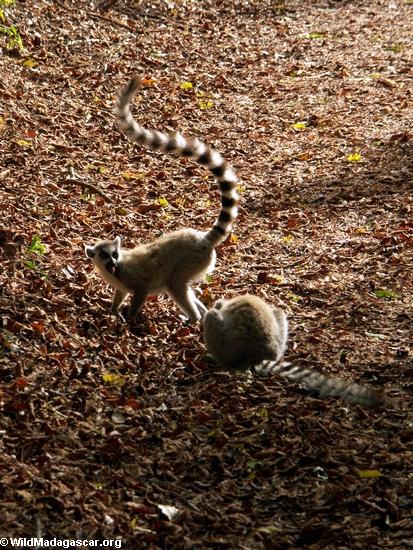New media resource on the wildlife of Madagascar
WildMadagascar.org announces availability of free media documents on Madagscar
Rhett Butler, mongabay.com
April 25, 2005
WildMadagascar.org, a leading information site on Madagascar, today announced the availability of PDF documents on the wildlife of Madagascar. The colorful “Wildlife of Madagascar” PDF [download 2.0M] is available free of charge on the site’s media section. All PDFs on the site can freely distributed via print or electronic means, provided that the PDF content is not modified or altered in any way.
 |
“Given the upcoming release of Dreamworks’ animated film I think the Wildlife of Madagascar handout could be an excellent educational resource for children and adults alike” says Rhett A. Butler, founder of the WildMadagascar.org site. “This is a great time for people to learn about Madagascar’s remarkable biological diversity.”
The Wildlife of Madagascar PDF represents the first of several documents that will be released by WildMadagascar.org over the coming months. Some documents will focus on specific parks within Madagascar.
Madagascar, the world’s fourth largest island at about size the size of Texas or France, is one of the more isolated countries on Earth. It sits in the Indian Ocean off the coast of southern Africa from which it has been separated for over 160 million years. Due to this isolation, about 70% of the estimated 250,000 species found on the island exist nowhere else on the globe. The island is home to such evolutionary oddities as lemurs, a group of primates endemic to the island; brilliantly colored lizards including geckos and chameleons; tenrecs, spiny hedgehog-like creatures; and the fossa, a carnivorous animal that looks like a cross between a puma and a dog but is closely related to the mongoose. This assemblage of peculiar and unique animals has made Madagascar a top conservation priority for years but due to the country’s poverty — Madagascar’s average per capita income is $260 while about 70 percent of its population lives below the poverty line and nearly half of its children under five years of age are malnourished — many of these animals are today quite rare and threatened with extinction. It is just this biological diversity that has made Madagascar the setting for a new film to be released by Dreamworks in May 2005.
The Wildlife of Madagascar document includes photos and information on the following animals:
-
Lemurs
- Aye-aye
- Indri
- Bamboo lemur
- Verreaux’s Sifaka
- Ring-tailed lemur
- Mouse lemurs
- Red-fronted brown lemur
- Lepilemur, Sportive or Weasel lemur
- Black-and-white ruffed lemur
Other Mammals
- Fossa
- Narrow-striped mongoose
- Fanaloka
- Streaked tenrec
Birds
- Madagascar Pygmy Kingfisher
- Madagascar Paradise Flycatcher
- Madagascar Bee-eater
- Gaint Coua
- Marsh Owl
Birds
- Tomato frog
- Golden mantella
- Painted mantella
- Boophis tree frogs
- Green Climbing Mantella
Reptiles
- Radiated tortoise
- Nile crocodile
- Day geckos
- Leaf-tailed or Uroplatus geckos
- Chameleons
- Brookesia chameleons
- Collared iguanid
- Langaha madagascariensis
- Madagascar tree boa
Invertebrates
- Pill millipede
- Millipede
- Giraffe necked Weevil
- Leaf insect
- Flatid leaf bug (Phromnia rosea)
About WildMadagascar.org:
Founded in 2004, WildMadagascar.org aims to raise awareness on Madagascar, one of the world’s most biodiverse countries. The island is best known for its lemurs — including the indri, aye-aye, and ring-tailed lemurs — but is also home to many other unique species from tenrecs to colorful chameleons. Proceeds from the site will go toward conservation efforts in the country, which is one of the poorest on Earth.
WildMadagascar.org is still in pre-launch form. The site will fully launch in late May 2005 and will feature a travel discussion forum, multiple language formats, park and wildlife profiles, commentary from leading experts on Madagascar, and a large collection of photos — including images taken by renowned photographer Julie Larsen Maher of the Wildlife Conservation Society (WCS).
Downloads:
Contact:
Rhett A. Butler
wildmadagascar.org
Madagscar